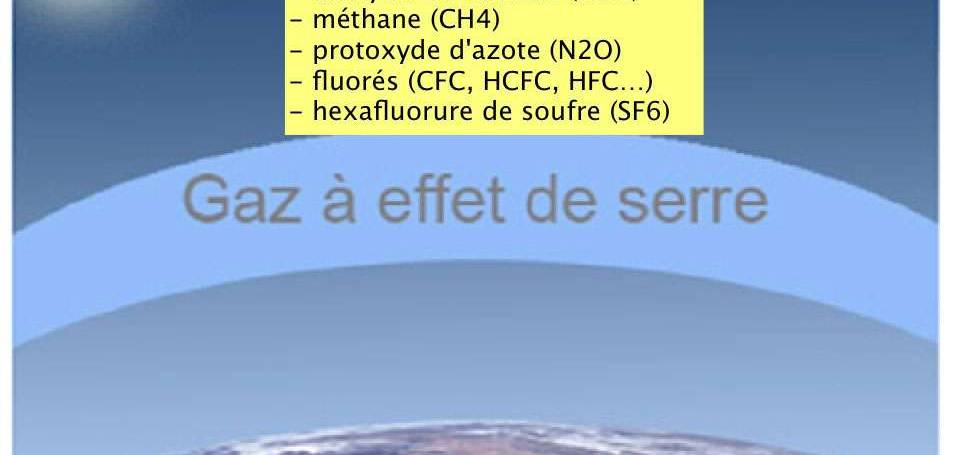
On September 16, 1987, 24 nations plus the European Community signed the Montreal Protocol ; agreement which intends to phase out the use of certain substances responsible for destroying the ozone layer. These are mainly CFCs (chlorofluorocarbons), HCFCs (hydrochlorofluorocarbons).
More recently, on October 15, 2016, the signatory members made a new amendment to this agreement, stipulating the gradual cessation of the production and use of another gas: HFCs hydrofluorocarbons. On July 24, 2020, 99 states and the European Union ratify the amendment and agree to reduce the production and consumption of HFCs by 85% by 2047
These gases are used as refrigerants in air conditioners and refrigerators. They are extremely polluting. They generate large amounts of greenhouse gases and are up to 15,000 times more powerful than CO2. Chlorine and fluorine, contained in molecules, react chemically and destroy ozone molecules. The increase in hydrofluorocarbon emissions is linked to the development of air conditioning (housing, transport, sales areas, among others). According to the International Energy Agency, air conditioning accounts for 10% of global electricity consumption. And according to a study published in Nature Communications , global warming will generate increased energy needs, for air conditioners in particular, from + 25% to + 60% by the middle of the century.
It was urgent to act when we know the speed at which sales of air conditioning and refrigeration units have already grown in the world over the past two decades.
Therefore, how can we hope to fight reasonably and effectively against global warming, to contain temperatures below 2 ° Celsius while continuing to manufacture devices containing such gases?
This is essentially what Maxime Beaugrand, director of the Paris office of the Institute for Governance and Sustainable Development, explained: "the elimination of HFC gases would prevent a warming of 0.5 ° C. by the end of the century, ie between a third and a quarter of the objectives of the 2015 Paris climate agreement. ”“ A figure that could even be doubled if we improve the energy efficiency of equipment refrigerants in parallel with the replacement of HFC gases ". "The action on super pollutants, HFCs but also methane, with a strong heating power and which has a short lifespan in the atmosphere, is an essential strategy to limit global warming to 1.5 ° in time. VS". Not to mention the significant increase in costs devoted to the fight against global warming in the case of greater use of air conditioning. A vicious circle that is very complicated to manage.
On April 16, it was China's turn to commit to eliminating these HFC gases. The announcement, made by President Xi Jinping after an interview with French President Emmanuel Macron and German Chancellor Angela Merkel, begins the decline of these super pollutants. For Maxime Beaugrand, China's entry into the club of 119 other signatory countries "will be a game-changer for the climate" . Remember that China alone produces 70% of air conditioners in the world and represents the largest share of HFC gas emissions.
Good news never comes alone, Joe Biden decides to follow in Xi Jinping's footsteps and intends to gradually restrict the use of these gases by in turn submitting the Kigali amendment to the Senate soon.
Maxime Beaugrand welcomes this and thinks that: “this should have a ripple effect: we now hope that India, the biggest consumer of air conditioners, undertakes to do the same, before universal ratification. "Indeed, the country saw its temperatures rise sharply in recent years and the use of air conditioners by the people is massive. Today, only 10% of Indians are equipped with air conditioners. But with more than four million new machines sold each year, that figure could climb to 240 million in 2030 from 15 million in 2011, according to sources at the International Energy Agency. Blame it on rampant urbanization, a decrease in green spaces and an incessant increase in the vehicle fleet. According to the Agency, during the summer, 40% of the electricity consumed in New Delhi is used for refrigeration.
In the end, the joint decisions of China and the United States are excellent news in view of the climate emergency facing the planet. It is therefore surprising that they have received so little coverage in the press.
"These gases are climate bombs. The most important have a lifespan of more than 50 years, but others only survive for ten years in the atmosphere. So if we put in place an aggressive strategy as soon as possible Now, we can reverse the trend, and hope for a reduction in warming of 0.5 ° C by 2100 for HFCs and of 0.3 ° C by 2050 for methane. The race against global warming is a marathon, but to win it we also need sprinters. HFCs and methane allow that, " insisted Maxime Beaugrand.
Posted on 2021-05-11 15:03








Comments